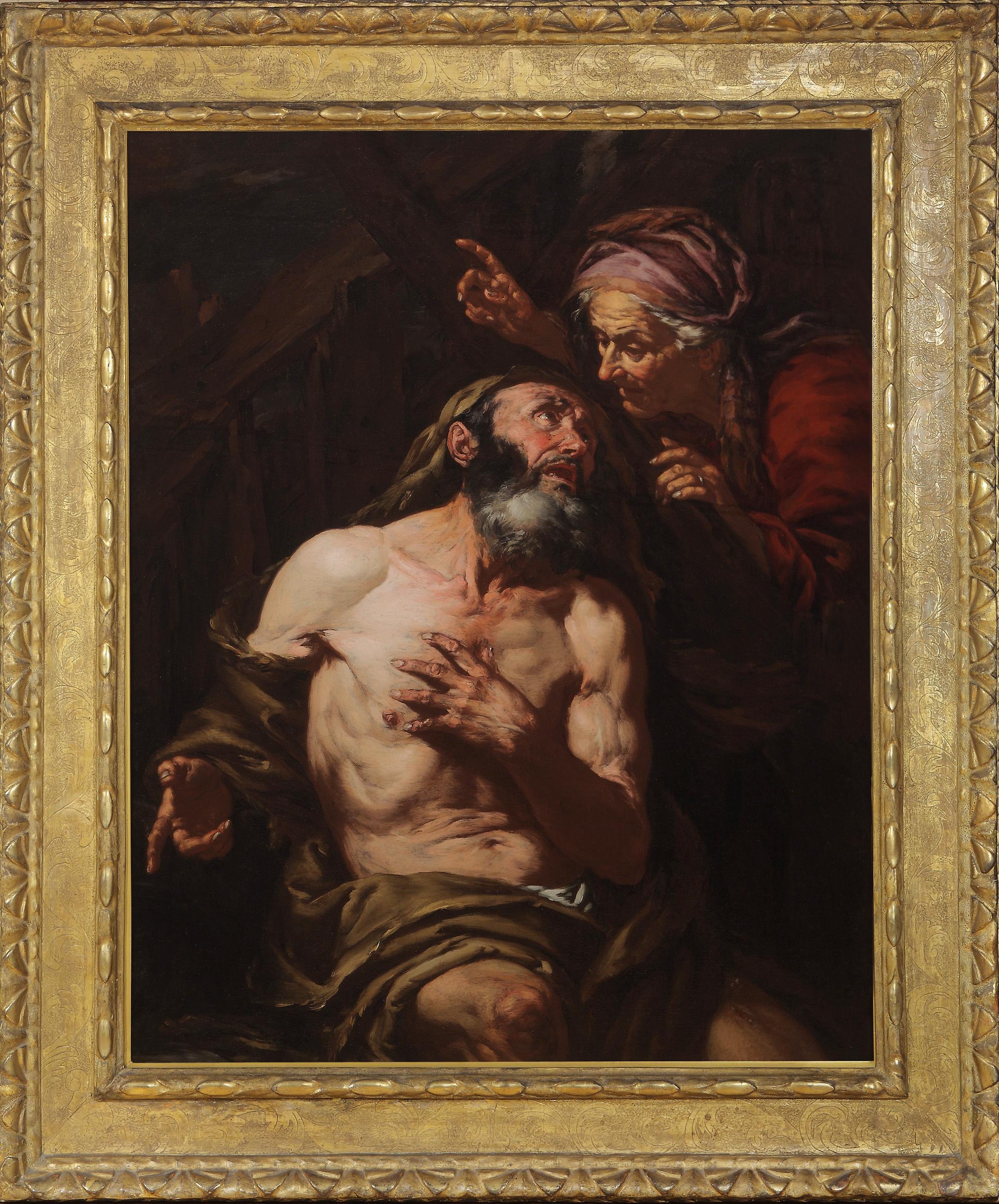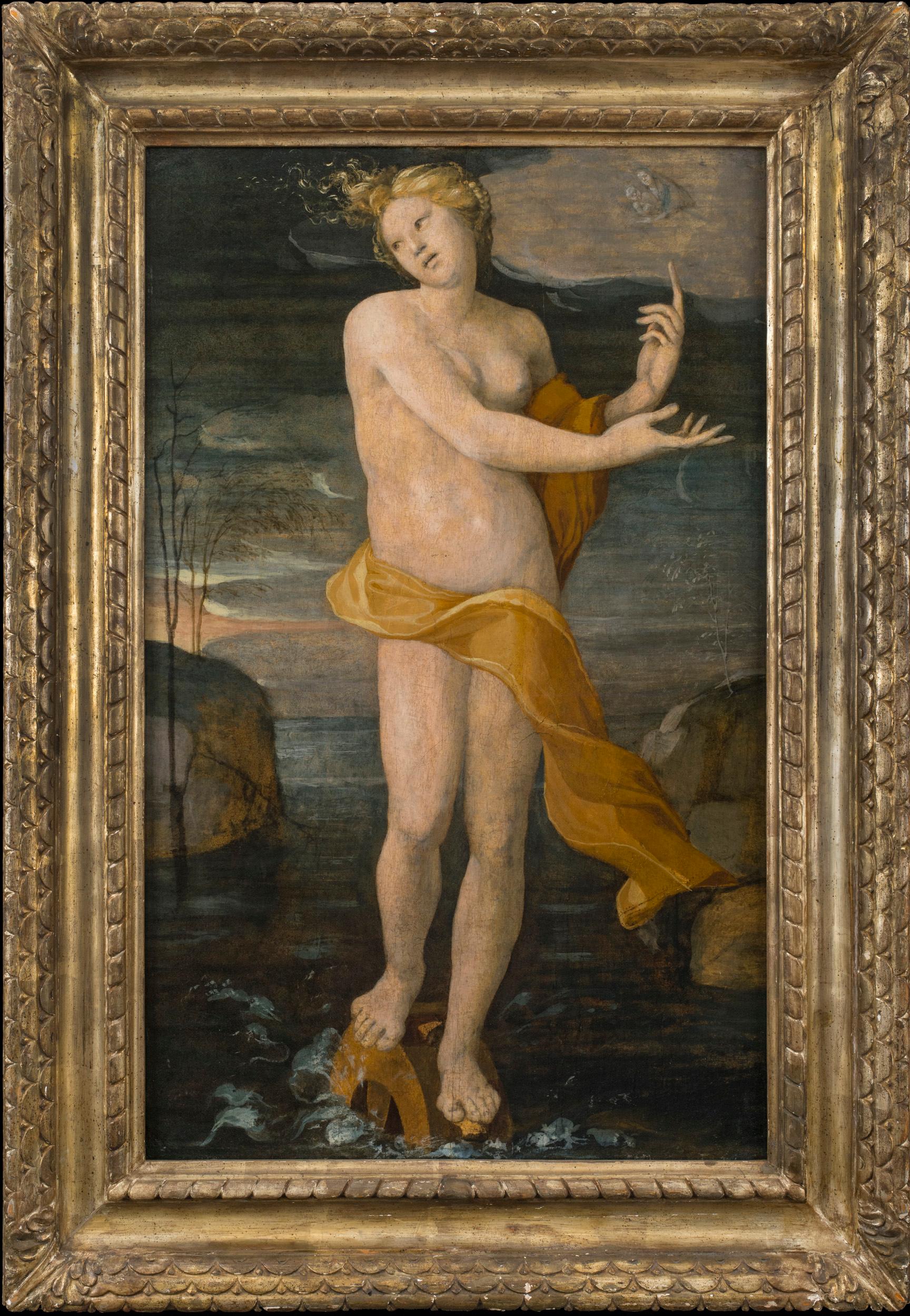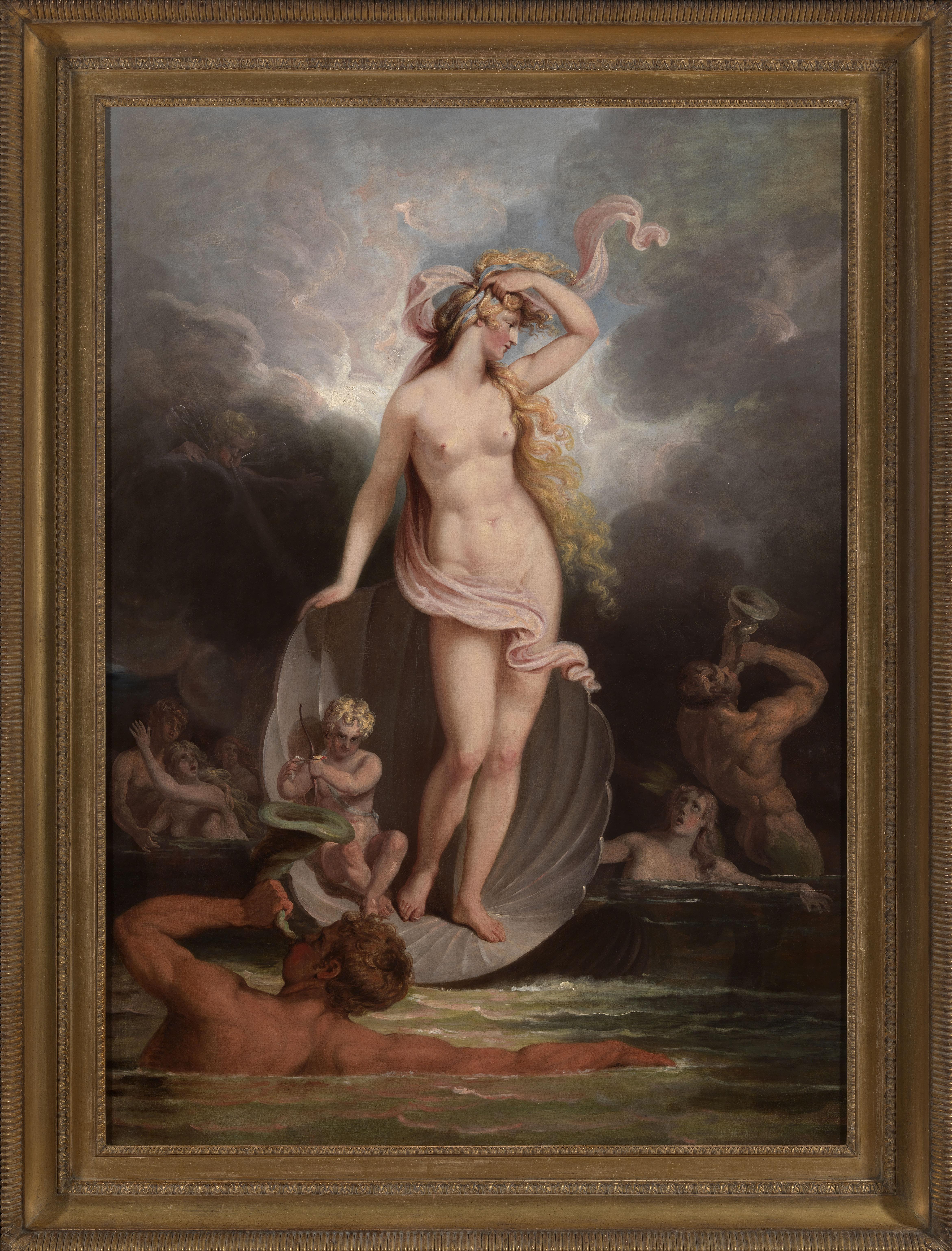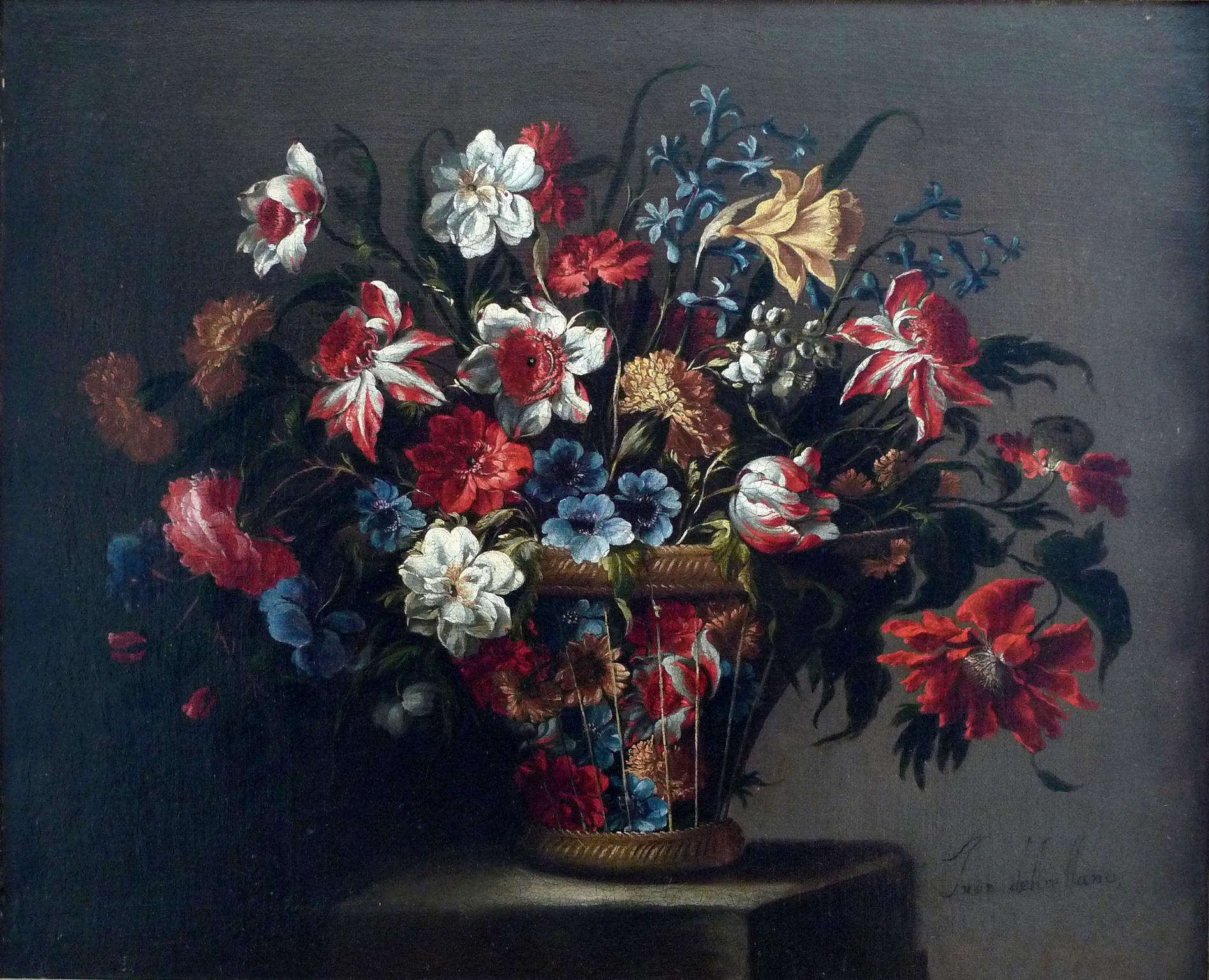Items Similar to Saint Jerome De Somer Paint Oil on canvas 17th Century Old master Flemish Art
Want more images or videos?
Request additional images or videos from the seller
1 of 22
Saint Jerome De Somer Paint Oil on canvas 17th Century Old master Flemish Art1620-1650
1620-1650
About the Item
Hendrick de Somer, known as Enrico Fiammingo
(Lokeren 1602 - Naples 1655)
Saint Jerome penitent in the cave
oil on canvas
103 x 130 cm. - In original period frame 123 x 152 cm.
This superb Saint Jerome, among the most popular and recurring figures in seventeenth-century pictorial works, is a work of extraordinary visual impact, showing the Christian monk portrayed in the guise of a hermit kneeling in the act of praying in the dim light of a cave.
The painting is undoubtedly indebted to the Neapolitan models of the early seventeenth century, and in particular the stylistic features highlight the reflections of Jusepe de Ribera (1591-1652), evident both in the choice of the subject and in the dramatic expressiveness of the elderly body.
Compared to the great master, however, the canvas presents a softer pictorial approach compared to the dark and naturalistic tensions typical of his art, turning towards a neo-Venetian style of painting based on the expressive strength of colour. These considerations, combined with the descriptive attention to the face, suggest the attribution to Hendrick van Somer (1607 - 1656).
The numerous paintings of certain authenticity present in private collections and in important public collections are a fundamental comparative term with this beautiful and sentimentally intense canvas.
Among his known works there are three versions of Saint Jerome in the Desert, one in the Trafalgar Galleries in London from 1651, the other the superb Saint Jerome in the National Gallery of Palazzo Barberini in Rome signed and dated 1652, and also that of the Spada Gallery also in Rome.
Our work shows Somer's complex language, with the Riberesque roots evident in the choice of the subject and the dramatic expressiveness of the old arm clearly highlighted.
The Saint, with his slender body, all tense tendons and rigid bones, is placed in contrast with the large red drapery of the mantle that envelops him, alluding to his cardinal's dignity. The open book is his canonical iconographic attribute, referring to Jerome's fruitful activity as a scholar, biblical scholar and theologian, which made him the forerunner of the Renaissance humanist.
ADDITIONAL INFORMATION:
The work is completed by a beautiful antique frame and is sold with a certificate of authenticity and guarantee.
We take care of and organize the transport of the purchased works, both for Italy and abroad, through professional and insured carriers.
It is also possible to see the painting in the gallery in Riva del Garda, we will be happy to welcome you to show you our collection of works.
Contact us, without obligation, for any additional information.
- Attributed to:Hendrick De Somer (lokeren 1602 - Naples 1655)
- Creation Year:1620-1650
- Dimensions:Height: 59.85 in (152 cm)Width: 48.43 in (123 cm)
- Medium:
- Movement & Style:
- Period:
- Condition:
- Gallery Location:Riva del Garda, IT
- Reference Number:1stDibs: LU988114415332
About the Seller
4.8
Platinum Seller
These expertly vetted sellers are 1stDibs' most experienced sellers and are rated highest by our customers.
Established in 2017
1stDibs seller since 2018
203 sales on 1stDibs
Typical response time: <1 hour
- ShippingRetrieving quote...Ships From: Riva del Garda, Italy
- Return PolicyA return for this item may be initiated within 7 days of delivery.
More From This SellerView All
- Deposition Atala De Roussy-trioson Paint Oil on canvas 19/20th Century FrenchLocated in Riva del Garda, ITThe deposition of Atala Follower of Anne-Louis Girodet de Roussy-Trioson (Montargis, 1767 - Paris, 1824) 19th-20th century Oil on canvas 47 x 65 cm. - Framed 67 x 84 cm The propos...Category
Late 19th Century Old Masters Paintings
MaterialsOil
- Portrait Noblewoman Dog Van Loo Paint 18th Century Oil on canvas Old master ArtLocated in Riva del Garda, ITLouis Michel van Loo (Toulon 1707- Paris 1771) attributable Portrait of a noblewoman with her little dog Oil on canvas (79 x 66 cm. - with frame 92 x 78 cm.) A qualitative portrait depicting an elegant noblewoman of French origin, presumably belonging to the wealthy court of Versailles during the reign of Louis XV; this work fully reflects the pictorial qualities as well as the refinement of the compositional style of the French painter Louis Michel van Loo (1707- 1771), one of the most significant portrait painters of his time, and for this reason in demand at the most noble European courts. The work, taking up the traditional formula for portraits of members of the aristocracy, shows the effigy in a half-length pose, slightly turned to the right and looking directly at the viewer. The woman, with a regal bearing, is here portrayed intent on completing her daily beauty ritual, wearing a cape during her make-up, which must have just been completed as pink powder is visible on her cheeks. This luxurious garment reveals a corset with a daring neckline, made of silk and lace, and a coral-coloured dress ending in wide jabote cuffs. Her hair is styled in the French fashion in a hairstyle that highlights her facial features. Having finished her beauty ritual, the woman is intent on removing her cape with one hand, an elegant gesture that emphasises her noble pose. At her side is her small pet dog, sitting on a blue velvet cushion with gold trim. The canvas may have been made on the occasion of a wedding, elegantly celebrating the role of a member of the aristocracy. The presence of the pet depicted in her arms had in fact a precise meaning: the fidelity that is such a well-known characteristic of the dog, declared at the same time the virtues of the effigy. Louis Michel van Loo (Toulon 1707- Paris 1771) was the son of the painter Jean Baptiste van Loo, with whom he studied in Rome and Turin. He attended the Paris Academy, where he won the first prize for painting in 1726. In 1728 he returned to Rome, where he met Francois Boucher. In 1732, passing through Turin, he returned to Paris. In 1737 van Loo became court painter in Madrid, succeeding Jean Ranc...Category
18th Century Old Masters Paintings
MaterialsOil
- Coastal Landscape See Paint Lacroix de Marseille Oil on canvas 18th Century ArtLocated in Riva del Garda, ITCoastal view at sunset with fishermen and boats Atelier of Charles François Grenier De Lacroix, called de Marseille (Marseille 1700 - Berlin 1782) Oil on canvas 50 x 62 cm. - in fra...Category
18th Century Old Masters Paintings
MaterialsOil
- Resurrection Christ Tiziano 16/17th Century paint Oil on canvas Old master ItalyBy Tiziano Vecellio (Pieve di Cadore 1490 - Venice 1576)Located in Riva del Garda, ITThe Resurrection of Christ Follower of Tiziano Vecellio (Pieve di Cadore 1490 - Venice 1576) Venetian school of the late 16th/early 17th century Oil on canvas 108 x 78 cm. - Frame...Category
17th Century Old Masters Paintings
MaterialsOil
- Children Landscape Jeaurat Paint Oil on canvas 18th Century Old master FrenchLocated in Riva del Garda, ITÉtienne Jeaurat (Vermenton 1699 - Versailles 1789) Game of children intent on harvesting grain (Allegory of Summer) Mid-18th century Oil on canvas 97 x 129 cm - Framed cm. 112 x 14...Category
18th Century Old Masters Paintings
MaterialsOil
- Violin Player Ter Brugghen Paint Oil on canvas 17th Century flemish Old masterLocated in Riva del Garda, ITHendrick ter Brugghen (The Hague 1588-1629 Utrecht) Workshop Violin Player Oil on canvas 72 x 60 cm. Framed 87 x 78 cm. An analysis of the composition and style of this interestin...Category
17th Century Old Masters Paintings
MaterialsOil
You May Also Like
- Job Cursed by His WifeBy Giovanni Battista LangettiLocated in New York, NYProvenance: Alfred (1883-1961) and Hermine Stiassni (1889-1962), Brno, Czech Republic, by 1925; thence London, 1938-1940; thence Los Angeles, 1940-1962; thence by descent to: Susanne Stiassni Martin and Leonard Martin, San Francisco, until 2005; thence by descent to: Private Collection, California Exhibited: Künstlerhaus, Brünn (Brno), 1925, as by Ribera. “Art of Collecting,” Flint Institute of Art, Flint, Michigan, 23 November 2018 – 6 January 2019. Literature: Alte Meister...Category
1670s Old Masters Paintings
MaterialsCanvas, Oil
- Portrait of a Lady with a ChiqueadorLocated in New York, NYProvenance: Torres Family Collection, Asunción, Paraguay, ca. 1967-2017 While the genre of portraiture flourished in the New World, very few examples of early Spanish colonial portraits have survived to the present day. This remarkable painting is a rare example of female portraiture, depicting a member of the highest echelons of society in Cuzco during the last quarter of the 17th century. Its most distinctive feature is the false beauty mark (called a chiqueador) that the sitter wears on her left temple. Chiqueadores served both a cosmetic and medicinal function. In addition to beautifying their wearers, these silk or velvet pouches often contained medicinal herbs thought to cure headaches. This painting depicts an unidentified lady from the Creole elite in Cuzco. Her formal posture and black costume are both typical of the established conventions of period portraiture and in line with the severe fashion of the Spanish court under the reign of Charles II, which remained current until the 18th century. She is shown in three-quarter profile, her long braids tied with soft pink bows and decorated with quatrefoil flowers, likely made of silver. Her facial features are idealized and rendered with great subtly, particularly in the rosy cheeks. While this portrait lacks the conventional coat of arms or cartouche that identifies the sitter, her high status is made clear by the wealth of jewels and luxury materials present in the painting. She is placed in an interior, set off against the red velvet curtain tied in the middle with a knot on her right, and the table covered with gold-trimmed red velvet cloth at the left. The sitter wears a four-tier pearl necklace with a knot in the center with matching three-tiered pearl bracelets and a cross-shaped earing with three increasingly large pearls. She also has several gold and silver rings on both hands—one holds a pair of silver gloves with red lining and the other is posed on a golden metal box, possibly a jewelry box. The materials of her costume are also of the highest quality, particularly the white lace trim of her wide neckline and circular cuffs. The historical moment in which this painting was produced was particularly rich in commissions of this kind. Following his arrival in Cuzco from Spain in the early 1670’s, bishop Manuel de Mollinedo y Angulo actively promoted the emergence of a distinctive regional school of painting in the city. Additionally, with the increase of wealth and economic prosperity in the New World, portraits quickly became a way for the growing elite class to celebrate their place in society and to preserve their memory. Portraits like this one would have been prominently displayed in a family’s home, perhaps in a dynastic portrait gallery. We are grateful to Professor Luis Eduardo Wuffarden for his assistance cataloguing this painting on the basis of high-resolution images. He has written that “the sober palette of the canvas, the quality of the pigments, the degree of aging, and the craquelure pattern on the painting layer confirm it to be an authentic and representative work of the Cuzco school of painting...Category
17th Century Old Masters Paintings
MaterialsCanvas, Oil
- Allegory of FortuneLocated in New York, NYProvenance: S. Spinelli Collection, Florence; their sale, Galleria Pesaro, Milan, July 11-14, 1928, lot 112 (unsold); reoffered Galleria Luigi Bellini, Florence, April 23-26, 1934, lot 132, as manner of Baldassare Peruzzi Dr. Giacomo Ancona, Florence, 1930s, and after 1939, San Francisco; thence by descent to his son: Mario Ancona, San Francisco; thence by descent to his children: Mario Ancona III and Victoria Ancona, San Francisco, until 1995; thence to: Phyllis Ancona Green, widow of Mario Ancona, Los Angeles (1995-2012) Literature: Donato Sanminiatelli, Domenico Beccafumi. Milan 1967, p. 170 (under paintings attributed to Beccafumi) Among the precious survivors of Renaissance secular paintings for domestic interiors are several unusual and particularly attractive panels painted in Siena at the end of the fifteenth and beginning of the sixteenth centuries. These paintings depict exemplary figures from antiquity—heroes or heroines, as well as allegorical, literary, and mythological figures. For the most part, these panels have survived in groups of three, although it is possible that some of these works were painted either as part of larger series or as individual projects. One such trio by Beccafumi consists of two paintings now at the National Gallery, London (Marcia and Tanaquil) and a third in the Galleria Doria-Pamphilj, Rome (Cornelia). These were commissioned around 1517–1519 for the bedroom of Francesco di Camillo Petrucci in Siena and were most likely placed together as elements in the wall decoration (spalliere) or installed above the back of a bench or cassapanca. Another, earlier (ca. 1495–1500), set of three—Guidoccio Cozzarelli’s Hippo, Camilla, and Lucretia (Private Collection, Siena) survives with its original wooden framework—a kind of secular triptych. Judith, Sophonisba, and Cleopatra in the collection of the Monte dei Paschi, Siena, are by an anonymous artist close to Beccafumi called the “Master of the Chigi-Saracini Heroines.” Girolamo di Benvenuto’s Cleopatra, Tuccia, and Portia are dispersed (homeless, Prague, Chambery), and Brescianino’s Faith, Hope, and Charity are in the Pinacoteca Nazionale in Siena. The present painting first appeared in the Spinelli sale in Florence in 1934, at which time it was sold with two panels of identical size and format. Each was catalogued as being by the “manner of Baldassare Peruzzi” and of unidentified subject. Of these, the painting depicting a male figure turned to the right has recently reappeared in a private Italian collection, while the location of the third work, portraying a cloaked figure turned three-quarters left, remains unknown. Our panel depicts the allegorical figure of Fortune. Here she is represented in typical fashion as a nude female figure balanced on a wheel (sometimes called the Rota Fortunae), her billowing drapery indicating that she is as changeable as the wind. The appearance of the Virgin and Child in the cloud at the upper right is an unusual addition to the iconography. The subjects of the two pendant male...Category
16th Century Old Masters Paintings
MaterialsOil, Panel
- 18th century allegorical painting of The Triumph of BeautyLocated in London, GBExhibited: London, Royal Academy, 1800, no. 93 What was happening in British history painting in around 1800? In recent discussions of the emergence of a British School of history painting following the foundation of the Royal Academy in 1768, this is a question which is rarely posed and one which is not easily answered. Examination of surviving Royal Academy exhibition catalogues reveals a profusion of artists’ names and titles, few of which remain immediately recognizable, whilst endeavours to explain the impact of exhibition culture on painting - such as the 2001 Courtauld show Art on the Line - have tended to focus on the first and second generation of Royal Academician, rather than young or aspiring artists in the early nineteenth century. This makes the discovery and identification of the work under discussion of exceptional importance in making sense of currents in English painting around 1800. Executed by Edward Dayes...Category
18th Century Old Masters Figurative Paintings
MaterialsCanvas, Oil
- Virgin and Child, a paiting by David Teniers the Younger after Palma VecchioBy David Teniers the YoungerLocated in PARIS, FRProvenance: Dukes of Marlborough Collection, Blenheim Palace until its sale at Christie's London on 26 July 1886 (lot 172) English private collection until its sale at Christie's London on 11 December 1992 (lot 363) Erna Weidinger Collection (1923 - 2021) - Austria Literature : Georg Scharf - A list of the pictures in Blenheim Palace - Catalogue raisonné Part 2 - London 1862 (page 166 - number 199 "after Palma Giovane") Charles Davies...Category
1750s Old Masters Figurative Paintings
MaterialsOak, Oil
- "Cesta de flores", 17th Century Oil on Canvas, Still Flowers by Juan de ArellanoBy Juan de ArellanoLocated in Madrid, ESJUAN DE ARELLANO Spanish, 1614 - 1676 Cesta de Flores signed Juan de Arellano (lower lright) oil on canvas original period carved, gilt and polychrome...Category
17th Century Old Masters Still-life Paintings
MaterialsCanvas, Oil
Recently Viewed
View AllMore Ways To Browse
Yi Collection Frame
Gilbert Blocks
Swimming Lesson
Jacquet D
John Lucca
Paterson Scotland
Eglomise Figurative Painting
Le Smith Glass Vase
Avalon Bay
Greek Painted
Art 2m
Large Pink Blue Abstract
Modern Bird Oil Painting
Maryland Landscape
Oil On Canvas Impressionist Florals
Mexican Figural Sculpture
Framed 3d Objects
Brushes Of Famous Painter





